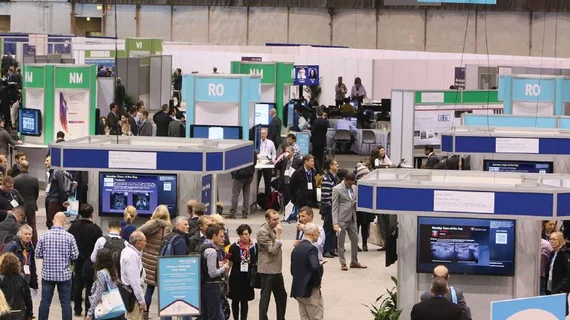RSNA 2019: Valerie P. Jackson, MD, Revisits Patient Care
When she was named president of the Radiological Society of North America last fall, Valerie Jackson, MD, called the organization’s annual gathering in Chicago “the leading forum for the introduction of medical imaging technologies.”
At this year’s RSNA, she’ll steer the conversation from high-tech to high-touch. The title of her president’s address: “A Matter of Perspective: Putting a New Lens on Our Patient Interactions.”
Jackson, a breast specialist whose other appointments include executive director of the American Board of Radiology and Eugene C. Klatte Professor Emeritus at Indiana University School of Medicine, took RBJ’s questions on her upcoming talk and other topics.
What has changed in the area of patient interaction to make this a timely topic for radiologists heading into 2020?
There have been a number of changes in radiology practice and the overall healthcare environment over the past decade that have made patient interaction a critical and timely component of radiologic care.
Aside from the obvious shift to emphasize value over volume—which we’ve been talking about for quite a few years now—we’ve now seen the emergence of artificial intelligence applications that can be trained to handle a variety of time-consuming tasks, freeing the radiologist to devote more time to patient interaction. It’s an exciting time in the specialty.
How are diagnostic radiologists—especially those for whom patient contact is traditionally uncommon—being affected by these changes?
Patients are playing a more interactive role in their medical care, and recent studies have shown that patients want more contact with their radiologists.
While the transition to patient-centered care has been easier for some than others, the paradigm shift offers several advantages. Diagnostic radiologists who are more patient-centered are less vulnerable to burnout and are more likely to be recognized as a trusted, integral member of their patients’ healthcare team.
What can all radiologists do to increase their visibility to patients?
It’s often thought that patient-centered simply means talking to patients. While patient communication plays a substantial role in the value-based care model, there are many tools and practices that radiologists can use to increase visibility and improve patient interaction in a variety of ways.
Adapting workflow to better accommodate patient preferences, developing patient-friendly radiology reports, and maintaining a social media presence are just few simple ways to enhance patient engagement.
How important is it to maintain one’s focus on serving referrers while also working to become more patient-centric in their outlook?
We’ve spent a great deal of time asking ourselves what our patients want. We need to be equally dedicated when it comes to building relationships with referring physicians. We must take the time to engage their trust and open the lines of communication to determine how best to serve the interests of our patients together.
While some referring physicians may be hesitant to welcome direct radiologist communication with patients, it’s important to position ourselves as partners on the care team. We add value. We add knowledge. In providing direct patient interaction, we reduce errors and decrease patient anxiety.
On a separate note, as a lifelong educator, how confident are you in radiology’s ability to continue attracting the best and brightest medical students?
I’m very confident. Radiology is such a dynamic field. We’ve seen astounding technological advances over the past few decades that have transformed the practice of medicine. I think this is a very attractive specialty for these young, technologically savvy students who grew up in the digital era. Diagnostic radiology applications are up.
From what you’ve seen, are some really avoiding radiology over hyped-up concerns about AI out-and-out replacing the specialty?
While some students may have expressed worry about AI, it’s not keeping them away. Nor should it. Like every technology that has come before it, AI is just another tool that radiologists can use to improve patient care.
What’s on your must-see list at McCormick Place come the week after Thanksgiving?
RSNA continues to be the leader in AI research and education, and RSNA 2019 is the place to learn about all things AI.
The AI Showcase has a new, larger location this year with more than 100 vendors occupying over 40,000 square feet, and the AI Showcase Theater will be brimming with exciting presentations from industry thought leaders. The RSNA Deep Learning Classroom and a hands-on classroom also will be part of the showcase, along with a special RSNA exhibit on emerging data technologies.
Elsewhere at the meeting, we have an array of accomplished plenary speakers, including Dr. Abraham Verghese, who will speak at the opening session on “Finding the Caring in Care.”
This year, we’ll also be highlighting research from our colleagues in Egypt and India.
The Fast Five session will be back, and the Diagnosis Live Residents’ Competition at the Discovery Theater is always lively.
If, for some reason, you can’t make it to Chicago, the RSNA 2019 Virtual Meeting will be bigger and better than ever. I hope everyone can find a way to be part of RSNA 2019, where we will see possibilities together.

